Grow Purple Cabbage, and transform your garden into a vibrant, edible masterpiece! Have you ever dreamed of harvesting your own jewel-toned vegetables, adding a splash of color and nutrition to your meals? Well, dream no more! This DIY guide is packed with simple, effective tricks to help you cultivate beautiful, healthy purple cabbage right in your backyard.
Cabbage, in general, has a rich history, dating back to ancient times. The Romans and Greeks prized it for its medicinal properties and culinary versatility. Purple cabbage, with its striking hue, adds a touch of elegance to this storied vegetable family. Its vibrant color comes from anthocyanins, powerful antioxidants that offer numerous health benefits.
But why should *you* specifically learn to grow purple cabbage? Because store-bought cabbage simply can’t compare to the flavor and freshness of homegrown. Plus, knowing exactly where your food comes from and how it’s grown gives you peace of mind. This DIY guide will walk you through every step, from selecting the right seeds to harvesting your gorgeous, antioxidant-rich purple cabbage. I’ll share my favorite tips and tricks to ensure a bountiful harvest, even if you’re a beginner gardener. Get ready to impress your friends and family with your stunning purple cabbage creations!
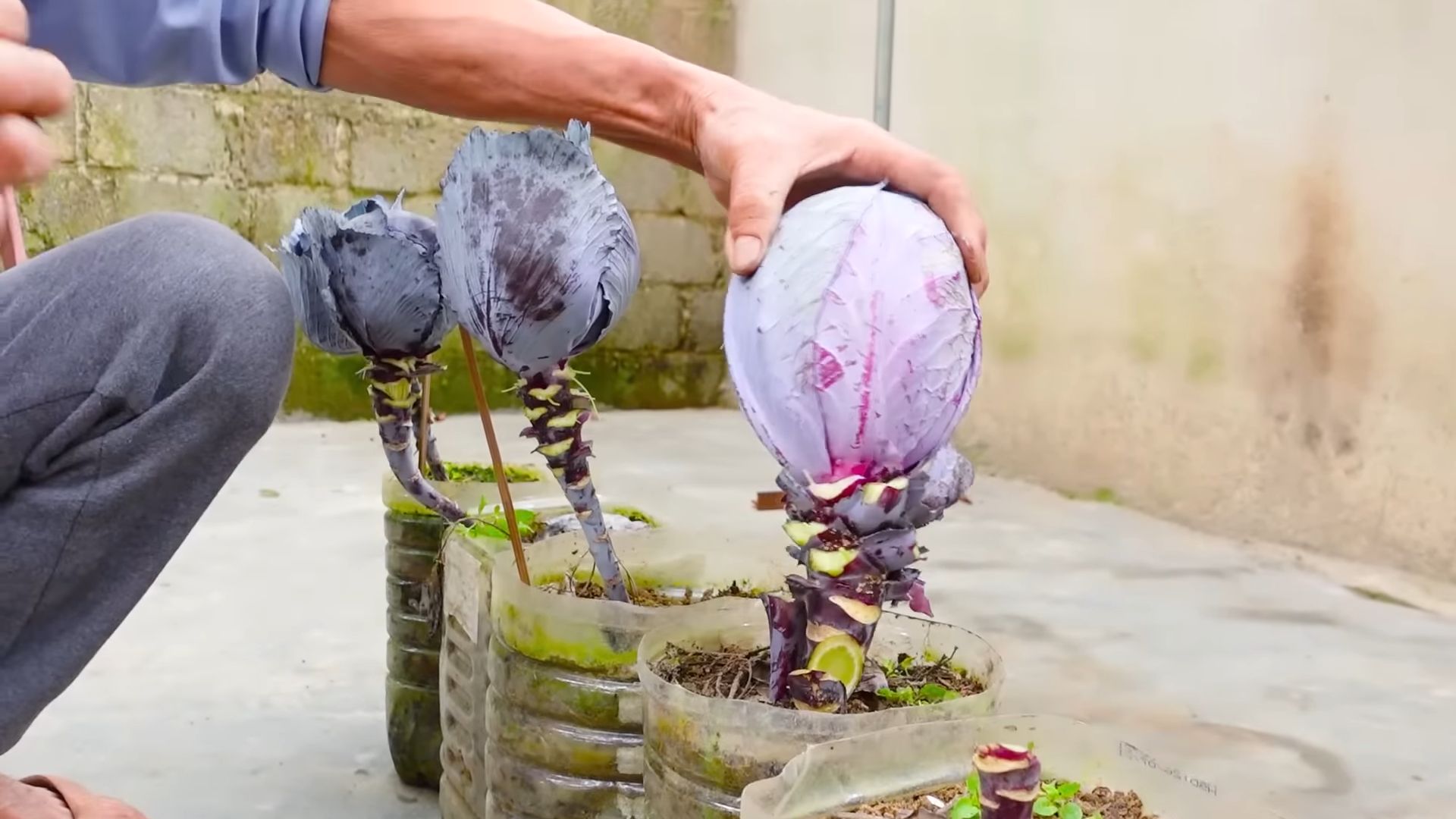
Growing Gorgeous Purple Cabbage: A DIY Guide for the Home Gardener
Okay, so you want to grow some vibrant, beautiful purple cabbage? Awesome! It’s easier than you might think, and the payoff – both visually and culinarily – is totally worth it. I’m going to walk you through everything you need to know, from seed to harvest. Let’s get our hands dirty!
Choosing Your Purple Cabbage Variety
First things first, let’s talk about varieties. Not all purple cabbages are created equal! Some are better suited for certain climates, and some have slightly different flavors or textures. Here are a few popular options:
* ‘Red Acre’: This is a classic, reliable choice. It matures relatively quickly (around 75-85 days) and produces medium-sized, dense heads. It’s known for its good storage ability.
* ‘Ruby Perfection’: As the name suggests, this variety is prized for its deep, rich purple color. It’s also a relatively early maturing variety (around 70-80 days).
* ‘Red Express’: If you’re looking for a super-early variety, ‘Red Express’ is a great option. It matures in as little as 60 days. The heads are smaller, but the quick turnaround is a definite plus.
* ‘Scarlett O’Hara’: This is another early variety, known for its beautiful, slightly flattened heads. It has a mild flavor and is great for salads.
Consider your local climate and growing season when making your choice. Check with your local garden center for recommendations on varieties that thrive in your area.
Starting Your Cabbage: Seeds vs. Transplants
You have two main options for starting your purple cabbage: from seed or from transplants. Both have their pros and cons.
* Starting from Seed: This gives you more control over the entire process and is generally more economical. However, it requires more time and effort, and you’ll need to start the seeds indoors several weeks before the last expected frost.
* Using Transplants: This is a quicker and easier option, especially if you’re short on time or space. You can purchase transplants from a garden center and plant them directly into your garden. However, you’ll have less control over the variety and the overall health of the plants.
I personally prefer starting from seed, as I find it more rewarding and cost-effective. But if you’re a beginner or just want a quicker start, transplants are a perfectly fine option.
Starting Seeds Indoors (My Preferred Method!)
If you’re going the seed route, here’s how to do it:
1. Gather Your Supplies: You’ll need seed starting trays or small pots, seed starting mix (a light, sterile mix specifically designed for seedlings), purple cabbage seeds, a spray bottle, and a grow light (optional, but highly recommended).
2. Sow the Seeds: Fill your seed starting trays or pots with seed starting mix. Moisten the mix thoroughly with the spray bottle. Sow the seeds about ¼ inch deep, placing 2-3 seeds per cell or pot.
3. Provide Light and Warmth: Cover the trays or pots with a clear plastic dome or plastic wrap to create a humid environment. Place them in a warm location (around 70-75°F) and under a grow light (if using). If you don’t have a grow light, place them near a sunny window, but be sure to rotate them regularly to prevent them from leaning towards the light.
4. Keep the Soil Moist: Check the soil moisture daily and mist with the spray bottle as needed to keep it consistently moist but not soggy.
5. Remove the Cover: Once the seeds germinate (usually within 5-10 days), remove the plastic dome or plastic wrap.
6. Thin the Seedlings: Once the seedlings have their first true leaves (the second set of leaves that appear after the initial seed leaves), thin them to one seedling per cell or pot. Choose the strongest, healthiest-looking seedling and snip off the others at the soil line.
7. Harden Off the Seedlings: About a week before you plan to transplant the seedlings outdoors, you’ll need to “harden them off.” This process gradually acclimates them to outdoor conditions. Start by placing the seedlings outdoors in a sheltered location for a few hours each day, gradually increasing the amount of time they spend outdoors over the course of the week. Protect them from direct sunlight and strong winds during this process.
Preparing Your Garden Bed
Purple cabbage needs a sunny spot with well-drained soil. Here’s how to get your garden bed ready:
1. Choose a Sunny Location: Cabbage needs at least 6 hours of direct sunlight per day.
2. Amend the Soil: Cabbage prefers rich, fertile soil with a slightly acidic pH (around 6.0-6.8). Amend the soil with plenty of compost or well-rotted manure to improve drainage and fertility.
3. Test the Soil pH: Use a soil testing kit to check the pH of your soil. If it’s too alkaline, you can lower it by adding sulfur or peat moss.
4. Remove Weeds and Debris: Clear the garden bed of any weeds, rocks, or other debris.
5. Till or Dig the Soil: Loosen the soil to a depth of at least 12 inches to allow for good root growth.
Transplanting Your Cabbage Seedlings (or Planting Transplants)
Now for the exciting part – getting those cabbage plants into the ground!
1. Choose the Right Time: Transplant your cabbage seedlings outdoors 2-3 weeks before the last expected frost in your area. If you’re using transplants, you can plant them as soon as the soil is workable in the spring.
2. Space the Plants Properly: Space the plants 18-24 inches apart in rows that are 24-36 inches apart. This will give them enough room to grow and mature.
3. Dig the Holes: Dig holes that are slightly larger than the root balls of the seedlings or transplants.
4. Carefully Remove the Plants: Gently remove the seedlings from their trays or pots, being careful not to damage the roots. If you’re using transplants, carefully remove them from their containers.
5. Plant the Cabbage: Place the seedlings or transplants in the holes, making sure that the top of the root ball is level with the surrounding soil.
6. Backfill the Holes: Fill the holes with soil and gently firm the soil around the plants.
7. Water Thoroughly: Water the plants thoroughly after planting.
Caring for Your Growing Cabbage
Once your cabbage plants are in the ground, it’s important to provide them with proper care to ensure a healthy and productive harvest.
1. Water Regularly: Cabbage needs consistent moisture, especially during hot, dry weather. Water deeply and regularly, aiming for about 1 inch of water per week.
2. Fertilize Regularly: Cabbage is a heavy feeder, so it’s important to fertilize it regularly. Use a balanced fertilizer (such as 10-10-10) every 2-3 weeks, following the instructions on the fertilizer label. You can also side-dress with compost or well-rotted manure.
3. Control Weeds: Keep the garden bed free of weeds, which can compete with the cabbage plants for nutrients and water. Hand-pull weeds regularly or use a hoe to cultivate the soil around the plants. You can also apply a layer of mulch to help suppress weeds.
4. Protect from Pests: Cabbage can be susceptible to a variety of pests, including cabbage worms, aphids, and flea beetles. Inspect your plants regularly for signs of pests and take action to control them if necessary. You can use organic pest control methods, such as insecticidal soap or Bacillus thuringiensis (Bt), or you can use chemical pesticides if necessary.
5. Watch Out for Diseases: Cabbage can also be affected by various diseases, such as black rot and clubroot. Choose disease-resistant varieties and practice good sanitation to prevent diseases. If you notice signs of disease, take action to control it promptly.
Harvesting Your Purple Cabbage
The moment you’ve been waiting for! Harvesting your beautiful purple cabbage.
1. Know When to Harvest: Cabbage is ready to harvest when the heads are firm and dense. The exact time will depend on the variety and the growing conditions, but generally, cabbage matures in 70-100 days from transplanting.
2. Check for Firmness: Gently squeeze the cabbage head. If it feels firm and solid, it’s ready to harvest. If it feels soft or loose, it needs more time to mature.
3. Cut the Head: Use a sharp knife to cut the cabbage head from the stem, leaving a few outer leaves attached.
4. Store Properly: Store harvested cabbage in the refrigerator for up to several
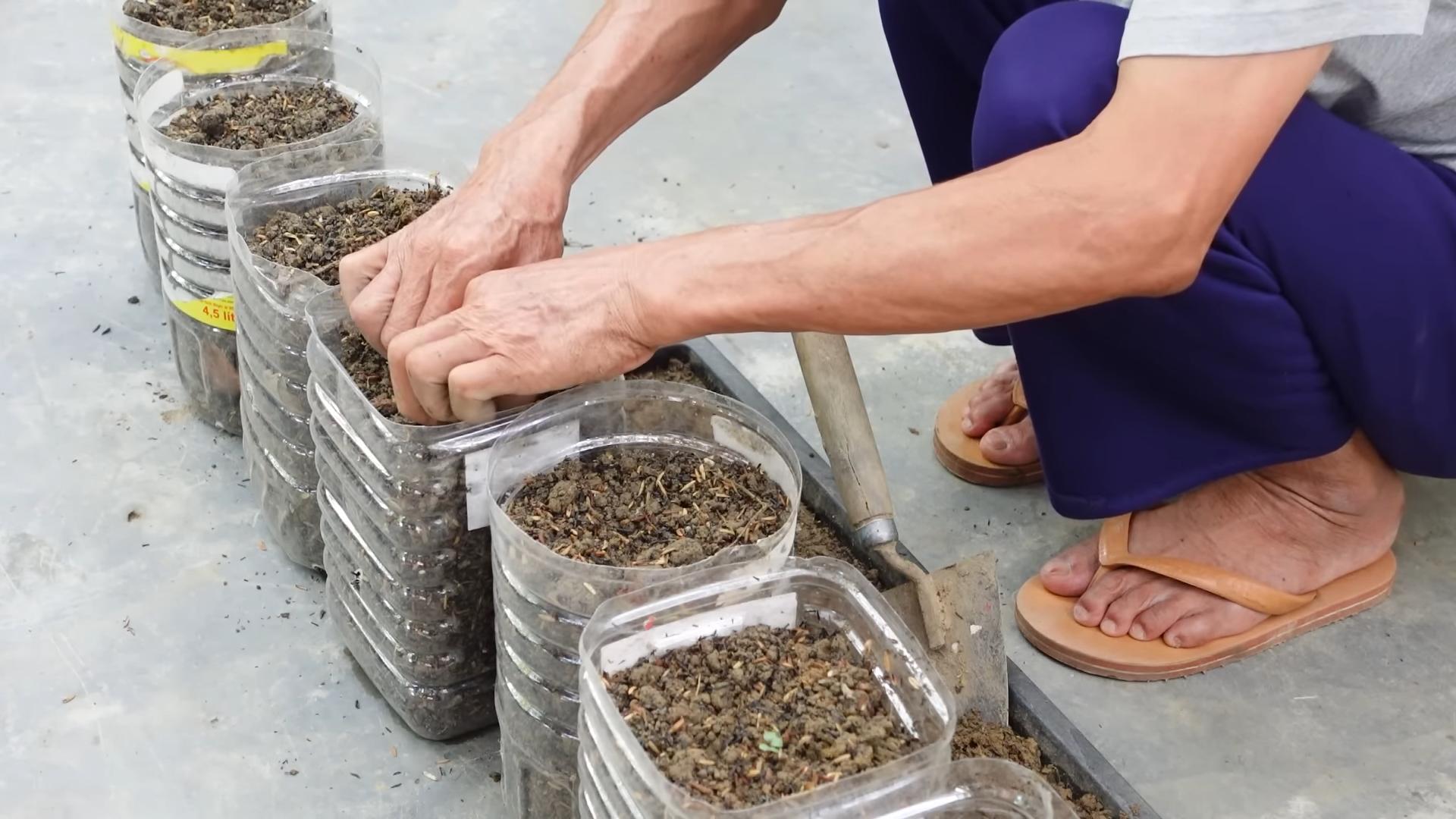
Conclusion
So, there you have it! Growing your own vibrant purple cabbage isn’t just a gardening project; it’s an investment in flavor, health, and a visually stunning addition to your kitchen garden. We’ve walked you through the essential steps, from selecting the right seeds to nurturing your seedlings and finally, harvesting that beautiful, tightly packed head of purple goodness.
Why is this DIY trick a must-try? Because store-bought purple cabbage simply can’t compare to the freshness and satisfaction of harvesting your own. You control the growing conditions, ensuring a pesticide-free, nutrient-rich vegetable bursting with flavor. Plus, the deep, rich color of homegrown purple cabbage is often far more intense than what you find in supermarkets. Think of the vibrant slaws, the colorful stir-fries, and the stunning pickled creations you can make!
But the benefits extend beyond the culinary. Gardening itself is a therapeutic activity, a chance to connect with nature and de-stress. Watching your purple cabbage plants grow from tiny seedlings to mature heads is incredibly rewarding. And let’s not forget the educational aspect – it’s a fantastic way to teach children about where their food comes from and the importance of sustainable practices.
Ready to take your purple cabbage growing to the next level? Consider these variations and suggestions:
* Companion Planting: Plant your purple cabbage alongside herbs like rosemary, thyme, and sage to deter pests naturally. Marigolds are also excellent companions, adding a splash of color and further repelling unwanted insects.
* Soil Amendments: Experiment with different soil amendments to see what works best in your specific climate and soil type. Compost, well-rotted manure, and bone meal can all contribute to healthier, more productive plants.
* Pickling Power: Once you’ve harvested your bounty, try pickling some of your purple cabbage. The vibrant color intensifies during pickling, creating a beautiful and delicious condiment. Add different spices like star anise, peppercorns, or ginger for unique flavor profiles.
* Fermentation Fun: Explore the world of fermentation by making your own purple cabbage sauerkraut. This probiotic-rich food is not only delicious but also incredibly beneficial for gut health.
* Microgreens Magic: Even before you have full heads of cabbage, you can harvest the young seedlings as microgreens. Purple cabbage microgreens are packed with nutrients and add a beautiful pop of color to salads and sandwiches.
We’re confident that with a little patience and care, you’ll be enjoying your own homegrown purple cabbage in no time. Don’t be afraid to experiment, learn from your mistakes, and most importantly, have fun!
Now, we want to hear from you! Have you tried growing purple cabbage before? What challenges did you face, and what successes did you celebrate? Share your experiences, tips, and photos in the comments below. Let’s create a community of purple cabbage enthusiasts and learn from each other. We can’t wait to see what you create! Remember, mastering the art of growing your own purple cabbage is a journey, not a destination. Enjoy the process, and savor the rewards.
Frequently Asked Questions (FAQ)
What is the best time of year to plant purple cabbage?
The best time to plant purple cabbage depends on your climate. In general, purple cabbage is a cool-season crop, meaning it thrives in cooler temperatures. For spring harvests, start seeds indoors 6-8 weeks before the last expected frost. Transplant seedlings outdoors 2-3 weeks before the last frost. For fall harvests, direct sow seeds in mid-summer, about 6-8 weeks before the first expected frost. Check your local frost dates to determine the optimal planting time for your region.
How much sunlight does purple cabbage need?
Purple cabbage requires at least 6 hours of direct sunlight per day to thrive. Choose a planting location that receives full sun for optimal growth and head development. If you live in a particularly hot climate, some afternoon shade may be beneficial to prevent the plants from overheating.
What type of soil is best for growing purple cabbage?
Purple cabbage prefers well-drained, fertile soil with a pH between 6.0 and 7.0. Amend your soil with compost or well-rotted manure before planting to improve drainage, fertility, and water retention. A soil test can help you determine the pH of your soil and identify any nutrient deficiencies.
How often should I water my purple cabbage plants?
Water your purple cabbage plants regularly, especially during dry periods. Aim to keep the soil consistently moist but not waterlogged. Water deeply at the base of the plants, avoiding wetting the foliage, which can increase the risk of fungal diseases. Mulching around the plants can help retain moisture and suppress weeds.
What are some common pests and diseases that affect purple cabbage?
Common pests that affect purple cabbage include cabbage worms, aphids, flea beetles, and cabbage root maggots. Common diseases include black rot, clubroot, and downy mildew. Regularly inspect your plants for signs of pests or diseases and take appropriate action. Organic pest control methods, such as handpicking pests, using insecticidal soap, or applying Bacillus thuringiensis (Bt), can be effective. Crop rotation and good sanitation practices can help prevent diseases.
How do I know when my purple cabbage is ready to harvest?
Purple cabbage is typically ready to harvest when the head is firm, tightly packed, and reaches the desired size. The exact size will depend on the variety you are growing. Gently squeeze the head to check for firmness. If it feels solid and dense, it’s likely ready to harvest. Use a sharp knife to cut the head from the stem, leaving a few outer leaves intact.
Can I grow purple cabbage in containers?
Yes, you can grow purple cabbage in containers, but you’ll need to choose a large container (at least 12 inches in diameter) to accommodate the plant’s root system. Use a well-draining potting mix and provide regular watering and fertilization. Container-grown purple cabbage may require more frequent watering than plants grown in the ground.
How do I store purple cabbage after harvesting?
Store harvested purple cabbage in the refrigerator for up to several weeks. Wrap the head in plastic wrap or place it in a plastic bag to prevent it from drying out. You can also store purple cabbage in a root cellar or other cool, dark, and humid location.
Is purple cabbage more difficult to grow than green cabbage?
Purple cabbage is generally no more difficult to grow than green cabbage. The growing requirements are similar, and both types of cabbage are susceptible to the same pests and diseases. The main difference is the color, which is due to the presence of anthocyanins, powerful antioxidants that give purple cabbage its distinctive hue.
Can I save seeds from my purple cabbage plants?
Saving seeds from purple cabbage can be challenging because cabbage is a biennial plant, meaning it takes two years to produce seeds. Additionally, cabbage is cross-pollinated, so if you grow multiple varieties of cabbage or other Brassica crops (such as broccoli, cauliflower, or kale) in the same area, the seeds may not be true to type. If you want to save seeds, you’ll need to isolate your purple cabbage plants and allow them to overwinter. In the second year, they will flower and produce seeds.

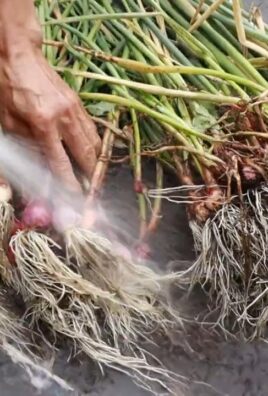
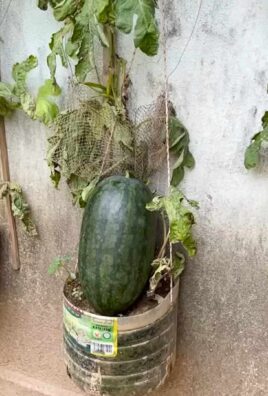
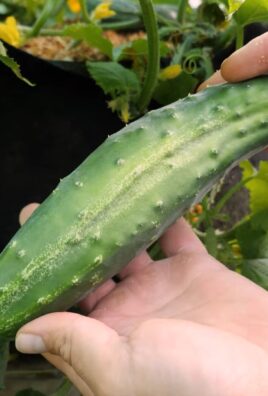
Leave a Comment